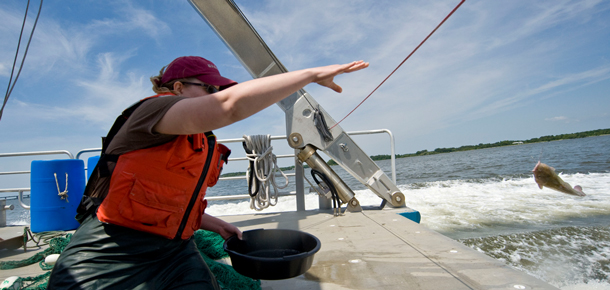Knauss legislative fellowships in Congress help build careers — and they're fun and educational. See our video and fact sheet for details.
Our Research Priorities

Support for sound scientific research and those who undertake it is at core of Maryland Sea Grant's mission. With a special focus on the Chesapeake Bay, Maryland Sea Grant has a tradition of fostering innovative scientific inquiry and analysis. We emphasize projects that offer practical applications for the protection and restoration of Maryland’s coastal resources. This work promotes the sustainability of Maryland’s environment and economy.
- Our funding opportunities: Every two years, we award scientists approximately $1 million in research grants using a rigorous, competitive peer review process. Smaller Program Development grants are often available between biennial cycles to address urgent or emerging needs with high relevance to society.
- Our research focuses: We choose priority research topics through a collaborative strategic-planning process that engages scientists, our advisory board, our partners, and the public. Currently these topics are:
- Our results: The research we have funded at institutions throughout Maryland has led to improved knowledge and new tools that are informing issues of critical importance to the state, the Mid-Atlantic region, and the nation. These projects have examined topics such as coastal and estuarine function, ecosystem restoration, ecosystem-based fisheries management, aquaculture, and seafood technology.
- Our outreach: We expect research projects to include public outreach and engagement components to ensure that the results of cutting-edge science will be put to work on the ground -- and in the water.
- Our funding sources: Our funding comes from the National Oceanic and Atmospheric Administration (NOAA) and the state of Maryland. Additionally, our efforts are supported by our administrative home, the University of Maryland Center for Environmental Science.
Questions? Contact Michael Allen, Ph.D., Associate Director for Research & Administration, (301) 405-6372 or mallen@mdsg.umd.edu.





